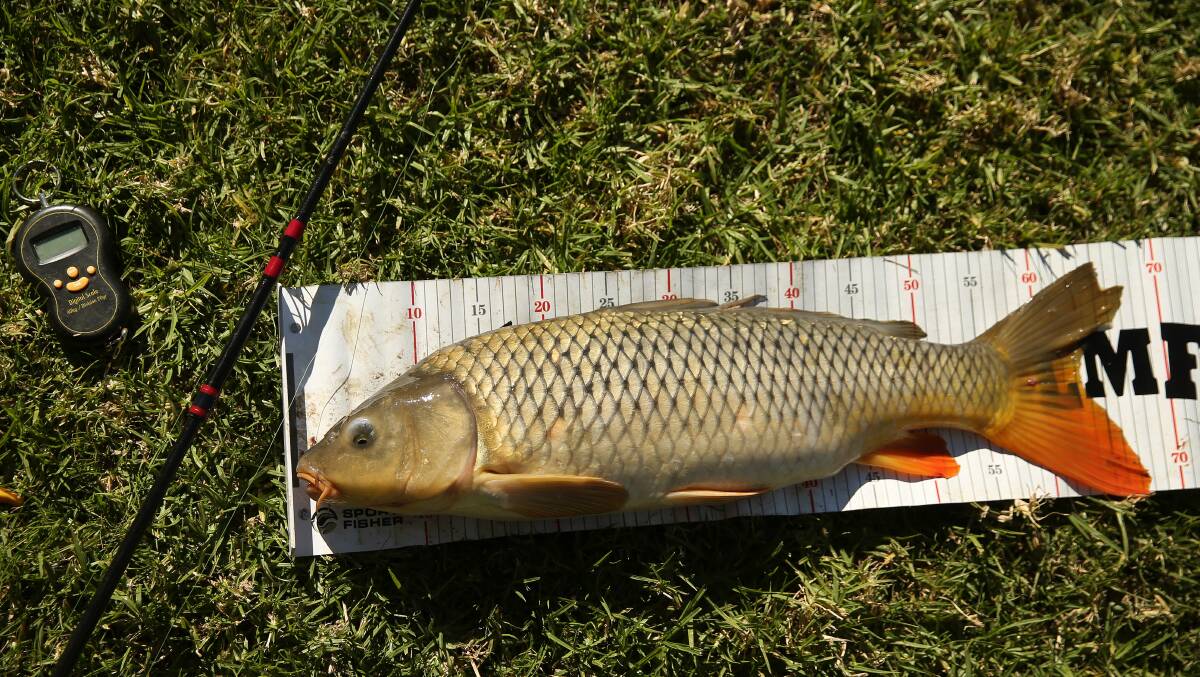An ecological disaster of avalanche proportions in NSW river systems is occurring, and closing the proverbial stable door after a bolting horse will not provide any answers.
Subscribe now for unlimited access.
or signup to continue reading
A six-kilogram European carp can spawn 1.5 million eggs, says Dubbo-based Matt Hansen, Inland Waterways OzFish co-founder.
"They are breeding machines. Manual removal is unfortunately not an option for large-scale and meaningful carp eradication," he said.
Mr Hansen, a member of the NSW ministerial advisory council on inland waterways, says carp is more than a significant problem that the National Carp Control Plan (NCCP), which sits within the Australian Federal Government, shows no signs of providing an answer.
READ ALSO:
He said the NCCP has already undertaken extensive trials at the cost of around $10.4 million and that in other parts of the world, releasing the Koi herpes virus to control numbers is nothing new.
"It has been trialled with other native fish, wildlife, water birds, and aquatic critters - this has all been undertaken to ensure it is species-specific, much like the rabbit Calicivirus."
He said turning the tide against carp would be an ideal aim with the use of the virus, and to be able to net, electro fish, or recreationally fish carp out of the waterways.
A concern about using the herpes virus is that a massive fish kill would impact waterways and native fish populations.
"The NCCP has also undertaken extensive research into decaying carp levels and the outcomes of the removal of this pest on a large scale across the Murray Darling Basin," Mr Hansen said.

"A large-scale native fish recovery plan needs to accompany the NCCP. To let the native species get back on top and stand over carp numbers, long term, while the window of opportunity is open.
"Unfortunately - there is nothing left in the arsenal to control carp. They have well and truly won the battle for now.
Herpes virus testing: 'several years to complete'
A spokesperson from the Department of Agriculture, Fisheries and Forestry (DAFF) said no decision had been made to release the carp virus.
They said the NCCP is only the first step of several vital stages needed to adequately consider a biological control agent's release.
These steps would take several years to complete.
Any potential future release of the carp virus can only occur with further consideration, agreement from all relevant jurisdictions, legislative approvals and extensive stakeholder consultation.
The delivery of information as part of the NCCP, including the NCCP report and associated documentation, will assist governments in deciding whether to continue the program to the next stage. The NCCP was a considerable body of work and jurisdictions, and the Australian government will need time to consider all content before deciding whether or not to proceed further with the program.
Questioned on what other measures are proposed for the control and removal of carp from the nation's waterways, the DAFF said the on-ground management of established pests is primarily the responsibility of state and territory governments and land managers and is carefully undertaken in line with state and territory legislation.
Options to control carp may include physical removal (fishing and harvesting), exclusion techniques, and stocking native fish.
Greatest ecological threat
NSW Irrigators Council Chief executive officer, Claire Miller, says the impact of carp is now one of the greatest ecological threats to native fish populations' recovery and the future of healthy rivers in the Murray Darling Basin.
She said the spawning event would pressure the Basin Ministerial Council to look past the simplistic 'just add more water' approach when considering the following steps on the Murray-Darling Basin Plan.
"No amount of buybacks will fix the Basin's biggest ecological threats, with rampant destructive feral species killing native species, wrecking their habitats and water quality," said Ms Miller.
"If we are serious about looking after these critical ecosystems, a health check would quickly reveal invasive species, degraded habitat, and water quality should be the priorities for action.
Southern Murray Darling Basin irrigator Jeremy Morton posted footage of young carp fingerlings in a small creek, saying: "This is just one little tiny spot, imagine how many countless billions have actually bred over the last few months, unbelievable."
ACM contacted the Murray Darling Basin Authority, which directed any requests for comment to the Department of Agriculture, Fisheries and Forestry.
Our journalists work hard to provide local, up-to-date news to the community. This is how you can continue to access our trusted content:
- Bookmark
- Make sure you are signed up for our breaking and regular headlines newsletters
- Follow us on Twitter
- Follow us on Instagram
- Follow us on Google News


